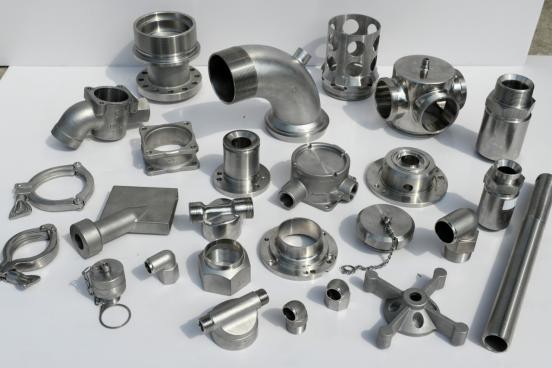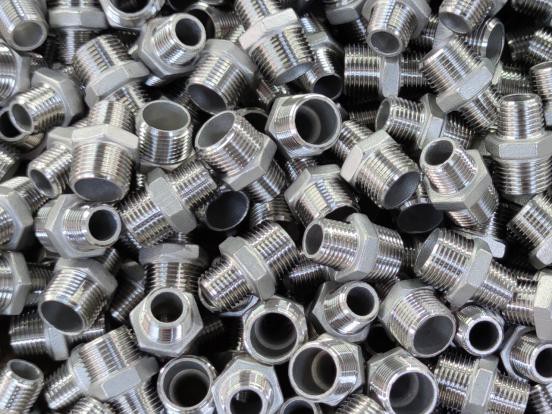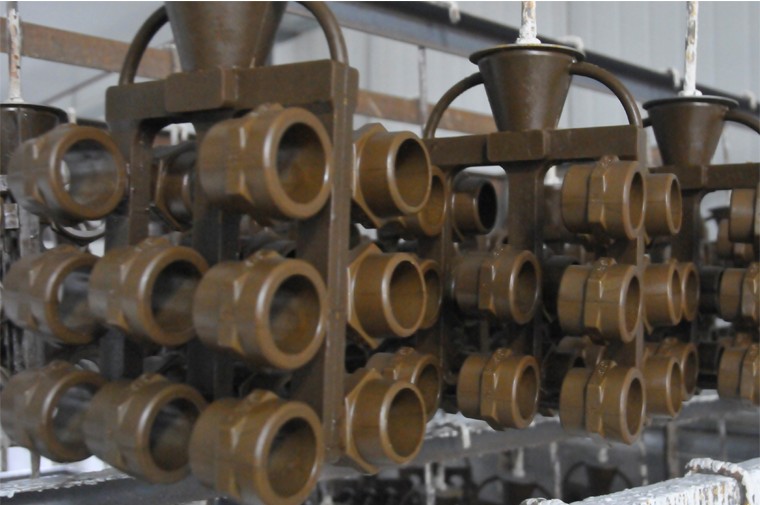
The stainless steel precision casting industry is different from the traditional casting industry. Although my country is a large casting country, precision casting is in the development stage, and there is still a big gap with developed countries. In recent years, my country has vigorously promoted industrialization and the level of science and technology has been continuously improved. There are already some relatively mature technical methods in precision casting. At the same time, my country's demand for precision casting products is also increasing. Therefore, precision casting (especially stainless steel precision casting) will have a broad space for development in our country.
Broad prospects for the development of stainless steel precision casting
Stainless steel precision casting is also called investment casting. This process minimizes or does not perform cutting during the casting process. It is a casting process with less or no cutting, and is an excellent process technology in the foundry industry. Its application range is very wide, not only suitable for casting of various types and alloys, but also the dimensional accuracy and surface quality of the produced castings are higher than other casting methods. At the same time, investment casting methods can be used for high-temperature resistant and difficult-to-process castings. This casting method is more suitable for casting components in high-precision industries such as aerospace, defense, etc., because it is not in a state of ultra-high temperature during the casting process.
The earliest stainless steel precision casting can be traced back to the 1930s and 1940s. The United States was the first to use stainless steel precision casting to cast turbine blades in its technologically advanced aeroengine at that time. Get promoted. my country's research, development and use of stainless steel precision casting was established after the founding of New China. With the development of my country's defense industry, stainless steel precision casting research institutes or foundries have been opened in Liaoning, Guizhou, Beijing, Shaanxi, Hunan and other places. However, objectively speaking, my country's stainless steel precision casting industry is still in the development stage and cannot meet the development needs of my country's aerospace, defense industry and other industries.
The stainless steel precision casting industry is different from the traditional casting industry because the added value of stainless steel precision casting products is higher. According to relevant statistics ( data in 2013), in the aerospace equipment and excellent engines of European and American countries, the added value of precision casting original products accounted for nearly 70% of the total added value, but China's proportion is less than 35%. Although my country is currently the country with the largest casting volume, the casting value is still at the middle and upper reaches of the level and cannot yet reach the top level. Therefore, the fundamental significance of the development of stainless steel precision casting is the fundamental needs of national defense and science and technology, and it is the only way to develop the economy.
Technology continues to mature, but urgently needs improvement
At present, there are many mature technologies and processes in stainless steel precision casting.
Silica sol shell process. The silica sol shell making process is generally used in the more sophisticated internal combustion engine parts casting industry. The coating used in this method has better stability, does not require a chemical hardening process, is resistant to high temperatures, and has better resistance to deformation. However, the disadvantage of this technology is that it has poor wettability to the wax mold. Although it can be improved by adding surfactants, it will increase the investment to a certain extent.
Water glass shell technology. The water glass shell technology was invented very early, and my country also introduced the technology from the Soviet Union in the 1950s and 1960s. This technology has low cost, relatively simple operation, and low requirements on raw materials, and is widely used in stainless steel precision casting. However, the biggest problem of this technology compared to the silica sol shell making process is that the surface quality of the obtained castings is average and the dimensional accuracy is low. However, due to its cost advantage, my country still uses this technology in some civilian or low-precision internal combustion engines. Since the introduction of this technology, Chinese scientific researchers have made relatively large improvements to it, mainly in terms of improving shell coatings, optimizing hardeners, and adopting composite shells.
The main improvement to improve the shell coating is to add a certain amount of refractory clay to the back coating of the shell, so that the strength of the shell has been greatly improved, and the firing and firing of the single shell is realized. In terms of optimizing the hardener, ammonium chloride is often used as a traditional hardener, but this material will release a large amount of ammonia and nitrogen oxide gas during the casting process, causing pollution to the atmosphere. Therefore, the hardening agent is changed to aluminum chloride solution, and further to aluminum chloride crystal. The effect of this hardening agent is similar to that of ammonium chloride.
In the use of composite shells, because the surface quality of the water glass coating shells has certain defects, many original parts are cast in the form of multi-layer mold composite casting, which saves costs on the one hand and improves castings on the other hand. The surface quality.
In addition, in terms of the development of new processes, the more mature new processes currently include self-priming casting, foam plastic molds, and molten mold shell casting. However, these processes have obvious advantages and disadvantages in some aspects, and the future will still require continuous improvement by scientific and technological workers.
The development trend of multi-technology crossover and integration is obvious
In the future development direction, the intersection and integration of stainless steel precision casting technology will become more and more obvious. The development direction of the new round of technology and industrial revolution will not only depend on one or two disciplines or a single technology, but on multiple disciplines. , A high degree of crossover and deep integration of multiple technical fields. Therefore, stainless steel precision casting should also be integrated and developed with related technologies.
Cross use with rapid prototyping technology. Most of the cross-use of science and technology is for complementarity. The design and mold manufacturing in the process of making stainless steel precision casting wax molds are more complicated and require a lot of time. The rapid prototyping technology can well make up for this shortcoming. However, due to material limitations, rapid prototyping technology alone cannot meet the requirements. Therefore, in recent years, many workers first use polymer technology to obtain prototypes of castings, and then manufacture wax molds, which are then used in the stainless steel precision casting industry.
For example, light curing three-dimensional modeling technology ( SLA) and selective laser sintering technology (SLS) are currently relatively mature technologies used in conjunction with investment casting. SLA technology can provide higher dimensional accuracy, especially the accuracy of the outer surface of the parts; while the raw material price of SLS is relatively low, and the accuracy is lower than that of SLA technology. During the use of these two technologies, attention must be paid to controlling the key combination of rapid prototyping technology and stainless steel precision casting technology, including comprehensive consideration of cost control and casting accuracy of parts. Choosing the right balance is the key issue for the organic combination of rapid prototyping technology and investment casting.
Cross integration with computer technology. The scheme design and optimization work in the process of stainless steel precision casting is a labor-consuming and time-consuming work. In recent years, with the continuous development of computer technology, many industries that require a large number of calculations and precision calculations have introduced computer technology and developed various corresponding calculation software, such as ProCAST, Auto CAD, AFSolid, Anycasting and other software. These softwares can calculate or simulate the design and casting process of stainless steel precision casting, and realize program optimization through data calculation, which has played a good role in promoting the development of stainless steel precision casting.
Tsinghua University has been at the forefront of the world in the development of conventional general-purpose simulation software. It has also researched and developed computer simulation software for high-end casting such as aero engine parts casting simulation software, TiAi alloy turbine blades, etc.; Harbin Institute of Technology has already developed the space station, Important structures in aviation casting such as rockets have carried out laboratory software simulation casting research work; Huazhong University of Science and Technology has developed the Huazhu CAE system for mid-to-high-end investment casting, which has a wider range of applications and is currently relatively leading in China. A model of cross-use of computer technology and investment casting.
However, in the current use process, we should also pay attention to the modeling applicability of computer software and the thermophysical parameters of the material itself. A good solution to these problems can greatly shorten the development time of stainless steel precision casting.
Steady development requires multiple approaches
For a long time, my country has continuously adjusted its industrial structure, and the high-tech sector has become more and more important in my country's technological and economic development. Under such a general environment, the future of stainless steel precision casting has a bright future, and its steady development needs to advance in multiple ways.
First, we should insist on independent research and development and self-reliance. Although the method of technology introduction and improvement can greatly shorten the technological gap between China and advanced countries, this method of introduction is still a way of "walking the way of others" and is constrained by other countries. Therefore, under the new situation, our country should insist on focusing on the development of science and technology with its own characteristics and mastering the core science and technology, in order to make my country's precision casting industry continue to develop and progress.
Second, we should adhere to the concept of development and set an example for enterprises. The stainless steel precision casting industry is a relatively cutting-edge industry. The leaders and role models should be selected from many enterprises and use them to drive the development of my country's stainless steel precision casting.
Finally, the combination of R&D and production should be strengthened. There are not many institutions of higher learning engaged in the research of stainless steel precision casting in my country, and they are often not closely connected with major manufacturers. They only conduct research and development in school laboratories. This is a drawback for the mass production and large-scale promotion of my country's stainless steel precision casting industry. Therefore, manufacturers can establish a joint R&D and production cooperation mechanism with universities, so that technology can not only survive in the laboratory, but also be put into the production line.
Please leave us a message
Phone: 86-317-3093856
Phone: 86-317-3090998
Address: No. 35 , Huanghe East Road , Economic Development Zone, Cangzhou City, Hebei Province




